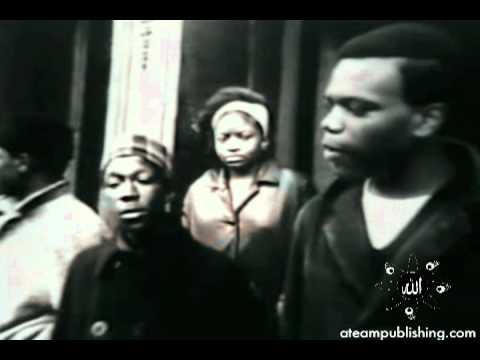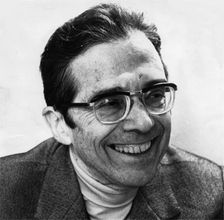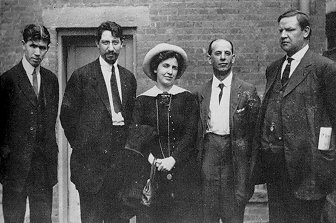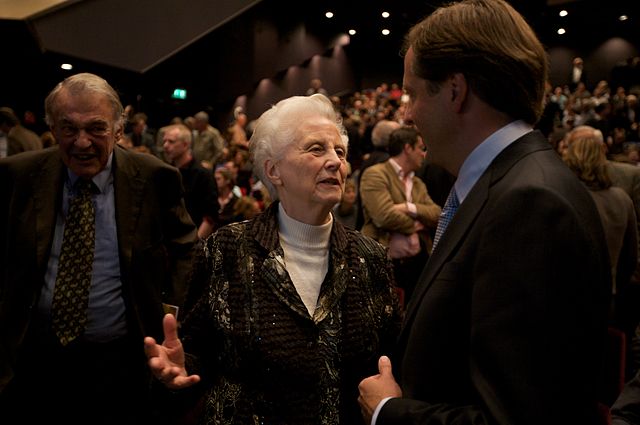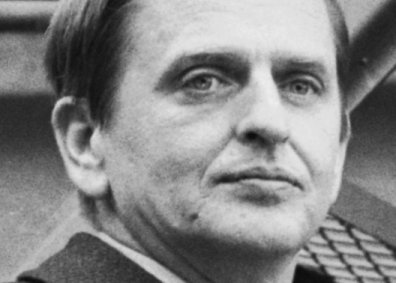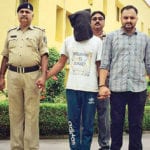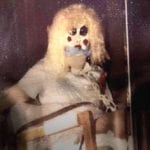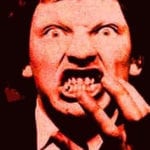10Piotr Jaroszewicz
Piotr Jaroszewicz was a Polish politician who served as prime minister from December 1970 to February 1980. Initially a teacher, Jaroszewicz joined the Soviet-backed First Polish Army during World War II and later held a number of positions in the Polish government. During his time as prime minister, he joined with Edward Gierek, the First Secretary of the Polish United Workers Party, to launch an ambitious economic program—which ended in a massive failure. Borrowing money from the West at a time when relations were relaxed, Jaroszewicz and Gierek hoped the loans would modernize Poland’s economy and allow it to become a major exporter to the West. However, the funds were mostly wasted or ended up in the pockets of corrupt officials. The country was unable to pay back its foreign debts, and food prices rose while wages stagnated. A 1976 protest ended with police firing into the crowd, further increasing Jaroszewicz’s unpopularity. After his term was over, he retired from politics and lived quietly in a Warsaw suburb. For reasons that have never been explained, Jaroszewicz became quite paranoid in his retirement. He had a huge wall covered with barbed wire built around his house, purchased a Rottweiler attack dog, and carried a pistol on his evening strolls. On September 2, 1992, he and his wife were found dead in their home. Jaroszewicz had been strangled with a leather strap and his head had been beaten and covered with bandages. His wife had been tied up and shot in the head with what was probably a high-velocity hunting rifle. Every room in the house seemed to have been searched and something appeared to have been taken from Jaroszewicz’s safe. A number of theories have been proposed for who the killers were and what they stole, with the most prominent being the suggestion that they were communists looking for documents to blackmail members of Solidarity, the anti-communist trade union whose leaders became heavily involved in the new democratic Polish government.
9Robert Smit
Robert Smit was a member of South Africa’s National Party, which governed during apartheid. An economics graduate, Smit served as deputy secretary of finance in the late 1960s, before representing South Africa at the International Monetary Fund in Washington. By 1977, he was widely expected to become finance minister following the national elections scheduled for October of that year. However, just a week before the elections, Smit and his wife Jeanne Cora were found dead in their home. Both had been stabbed in the back and shot multiple times with two different guns. The letters “RAU TEM” had been spray-painted in red across the fridge and kitchen walls. Authorities estimated that the couple had been murdered the previous evening. Aside from the strange graffiti, the murderers left no other clues. It was a very professional and clean attack, leading some to speculate that it was carried out by hit men, with the graffiti and stabbings part of an effort to make the killings look like a random attack by a lunatic. Over the next couple of months, rumors emerged that Smit had uncovered some sort of corruption scandal among South African higher-ups during his time in Washington. His friends said he was planning to expose something that would rock the entire country. Another theory, first suggested by journalist Joe Trento in 1980, claims that Smit was assassinated by a group of Cuban nationalists working for the CIA. This theory alleges that Smit had uncovered the names of some 20 American politicians who were being bribed to support Augusto Pinochet’s military dictatorship in Chile. Neither theory has been proven, meaning the murders currently remain unsolved.
8Clarence 13X
In 1963, Clarence 13X, a Korean War veteran whose birth name was Clarence Edward Smith, left the Nation of Islam, a black supremacist organization that combines Islamic religious themes and militant revolutionary politics. Clarence 13X was a member for over a decade, but began to grow disillusioned with the group around the early 1960s. After leaving, he founded the Five Percent Nation, named after his belief that only 5 percent of the world’s population knew the truth about God and existence. Unlike the Nation of Islam, which preached that its founder W.D. Fard was God, the Five Percent Nation believed that all black men had the potential to become Allah. Changing his name to “Allah the Father,” Clarence took his new religious movement to the streets of Harlem. Although it has always been fairly obscure, it has had a great influence on hip-hop, including such artists as the Wu-Tang Clan, Nas, and Jay-Z. Early in the morning of June 13, 1969, Clarence 13X was fatally shot by three unknown black men near his apartment. The FBI, which had been following him for years, took part in the investigation of his death and concluded that he was probably killed by a local group of extortionists. Supposedly, the extortionists had been hired by the Fair Play for Cuba Committee, a far-left organization that didn’t like how friendly Clarence 13X had been with New York City authorities and Mayor John Lindsay. However, members of the Five Percent Nation have disputed this theory, suspecting that the investigation was a cover-up to hide the FBI’s involvement in the murder.
7Alex Odeh
Alex Odeh was a Palestinian-American civil rights activist who worked for the American-Arab Anti-Discrimination Committee (ADC) in California. He was born in 1944, in what was then the British mandate of Palestine, but he and his Christian family left for the United States when he was 18 years old. On the morning of October 11, 1985, as Odeh was opening the front door of the ADC building, a pipe bomb exploded, killing him instantly. Seven others were wounded but survived. The FBI proclaimed the bombing a domestic terrorist attack, offering a $1 million reward for any information that might help find the perpetrators. Despite subsequent appeals in 1996, 2005, and 2010, Odeh’s killers have yet to be caught. About a year into the investigation, members of the Jewish Defense League (JDL) came under suspicion by the FBI. The JDL, a violent group of Jewish nationalists, were responsible for a series of bombings across the US in the 1980s. The advocacy group Jewish Voices for Peace has reported that some of the original suspects might now be living in the West Bank, trying to avoid capture. In October 2013, a coalition of the ADC, NAACP, and other civil rights groups pressured the Justice Department to renew the investigation, but sadly there have been no significant developments.
6Sharon Tyndale
Early in the morning of April 29, 1871, former Illinois secretary of state Sharon Tyndale left his house to catch a train at a nearby train station. He got up at 1:00 AM, bid his wife goodbye, and left carrying a traveling sack and a wallet containing $50. Around four hours later, a local named John A. Webster was on his way to the market when he noticed a drunk sleeping on the street with his coat covering his head. When Webster moved to wake him, he realized that the man was actually dead. It was Sharon Tyndale, who had been beaten and shot in the head. The club and pistol used to kill him were found right next to his body. Tyndale’s murder shocked the state. His political career had been uncontroversial, with arguably his major accomplishment being a harmless redesign of the state’s official seal. Since his wallet was taken, robbery was suggested as the motive, but the killer had left Tyndale’s change purse and gold watch alone. Police arrested a man seen prowling the streets in bloody clothes but had to release him after the blood turned out to be from a brawl with some boatmen. Three suspicious men were also reported in the area that night. They were last seen leaving on the exact train Tyndale had planned to take.
5Henri Curiel
Henri Curiel was a Jewish-Egyptian Communist and political activist. In the 1940s, Curiel was one of Egypt’s best-known leftists, having founded the largest Communist organization in the country, the Democratic Movement for National Liberation. In 1950, the Egyptian government took away his citizenship and deported him to Italy. From there, Curiel moved to France, where he became involved in the Algerian independence movement. He also organized a group called Solidarite, which trained militants to participate in liberation struggles in third-world countries, as well as to fight against the right-wing governments in Chile and South Africa. In June 1976, a French magazine claimed that he was a member of a KGB-linked terrorist network and he was temporarily placed under house arrest until the charges were dismissed. On May 4, 1978, Curiel was fatally shot by two men who were hiding near his home in Paris. The pair quickly escaped, never to be caught or identified. The OAS, a far-right French paramilitary group which opposed Algerian independence, took credit, but their claim is generally not taken seriously. Other candidates have included Mossad, the CIA, and Argentinian hit men working for the fascist government of Spain. While he was in prison, the South African poet Breyten Breytenbach claimed to have overheard some jailers boasting about the killing. Curiel was an opponent of apartheid, and it has been speculated that his connection to the anti-apartheid African National Congress might have prompted his assassination.
4Dela Giwa
Newswatch, Nigeria’s first and most popular news magazine, was founded in 1984 by the journalists Dele Giwa, Ray Ekpu, Dan Agbese, and Yakubu Mohammad. By 1986, the magazine had an average weekly circulation of 100,000 and had become well respected for its integrity, fairness, and investigative reporting. On October 19, 1986, two men in a Peugeot delivered a large brown envelope to Giwa’s home. His son, Billy, took it to his father in the kitchen, where Giwa was just about to eat dinner. As Giwa opened the parcel, it exploded with enough force to nearly tear off the lower half of his body, killing him instantly. Giwa’s killers were immediately accused of working for the government. At that time, Nigeria was ruled by a military dictator named Ibrahim Babangida, who had seized control of the country in a bloodless 1985 coup. Although initially friendly to free speech, his regime soon clamped down on the press, eventually banning Newswatch for six months in 1987. As Dele’s lawyer, Gani Fawehinmi, investigated the case on his own, he discovered that Giwa had been interrogated by the state security service two days before his murder, supposedly for plotting to destabilize the government. The next day, the director of military intelligence had called Giwa’s house and requested directions to it. The government promised Giwa’s colleagues that a judicial commission of inquiry would examine the case, but nothing ever came of this. Babangida is strongly suspecting of ordering Giwa’s murder himself.
3Carlo Tresca
Carlo Tresca was an Italian-American labor leader and journalist who was active in the labor movement for some 40 years. Although born to a wealthy family of landowners in Italy, Tresca’s father went bankrupt during an economic depression in the 1880s, leaving him unable to send his son to university. Instead, Carlo (pictured above, second from the left) became involved in the local socialist scene, where a newspaper he founded often came under scrutiny from the authorities. In 1904, after several encounters with the law, Tresca left the country for America. He spent the next four decades editing newspapers, organizing strikes and protests, and launching public campaigns against the Mafia, fascists, and Communists. Originally a socialist, he identified as an anarchist at the time of his death. On January 11, 1943, while walking home in the dark with a friend, Tresca was shot by an unknown assailant, killing him instantly. His killer ran off into the night and was never caught. The list of possible suspects is exhausting, since Tresca had enemies on both the left and the right. His condemnation of the Soviet Union and willingness to work with the authorities over the kidnapping of American communist Juliet Stuart Poyntz alienated him from many left-wing groups, with some of his former friends accusing him of being a traitor. The far-right was even more irritated with him, especially after he got into a feud with mob-connected fascist and influential businessman Generoso Pope. Author Dorothy Gallagher, who wrote a critically acclaimed biography of Tresca, has argued his assassin was gangster Carmine Galante. Although he was never charged with the crime, Galante might have been working under orders for a friend of Pope.
2Els Borst
In 2001, the Netherlands became the first country in the world to make euthanasia legal. So long as a terminally ill person had the approval of two doctors, he or she could have medical assistance in ending their lives. The new law sparked controversy throughout the world, with critics drawing parallels to the eugenics programs of the Nazis. The law’s architect, health minister Els Borst, would receive hate mail and death threats for the rest of her life. On the night of February 8, 2014, the 81-year-old Borst drove home from a party convention and parked in her garage. As she got out of her car, somebody struck her on the head with enough force to cave her skull in. Her body wasn’t found until two days later. Borst became the third major Dutch political figure to be murdered in the past 15 years. Two notable critics of Islam, Pim Fortuyn and Theo Van Gogh, were assassinated in 2002 and 2004, both in broad daylight. Borst, too, might have been killed for her controversial views. In January 2015, authorities announced that they had a suspect in custody. The suspect, a mentally troubled man named as Bart van U., had been arrested for killing his sister. He was known to have visited Borst’s house a week or so before her murder but was shooed away. DNA taken from him has been matched with some found at the crime scene, but he has not yet been put on trial.
1Olof Palme
Olof Palme was the Swedish prime minister from 1969–1976, and again from 1982 until his assassination in 1986. The leader of the Swedish Social Democratic Party, he was a champion of a number of third-world causes and was a vocal critic of American foreign policy, even accepting US deserters during the Vietnam War. On February 28, 1986, Palme was coming out of a movie theater with his wife Lisbeth when the couple was ambushed and shot by an unknown man. Lisbeth was wounded in the back, while Olof was shot twice in the stomach and died on his way to the hospital. Palme often walked around without bodyguards, so the killer easily got away. A middle-aged drug addict named Christer Pettersson was eventually arrested and tried for the crime, but no motive could be found and he was soon acquitted. Since Palme had numerous enemies, both at home and abroad, everybody from Kurdish separatists to right-wing Swedish police officers to the Yugoslavian secret service have been accused of killing him. Perhaps the most popular theory claims that Palme was killed by an agent hired by the South African government. Palme was very critical of apartheid and had made a powerful speech against it in the Swedish Parliament a week before his death. Stieg Larsson, the author of The Girl with the Dragon Tattoo, was a follower of this theory, believing that a Swedish mercenary named Bertil Wedin actually carried out the job. Tristan Shaw is a lover of literature and unsolved mysteries.


